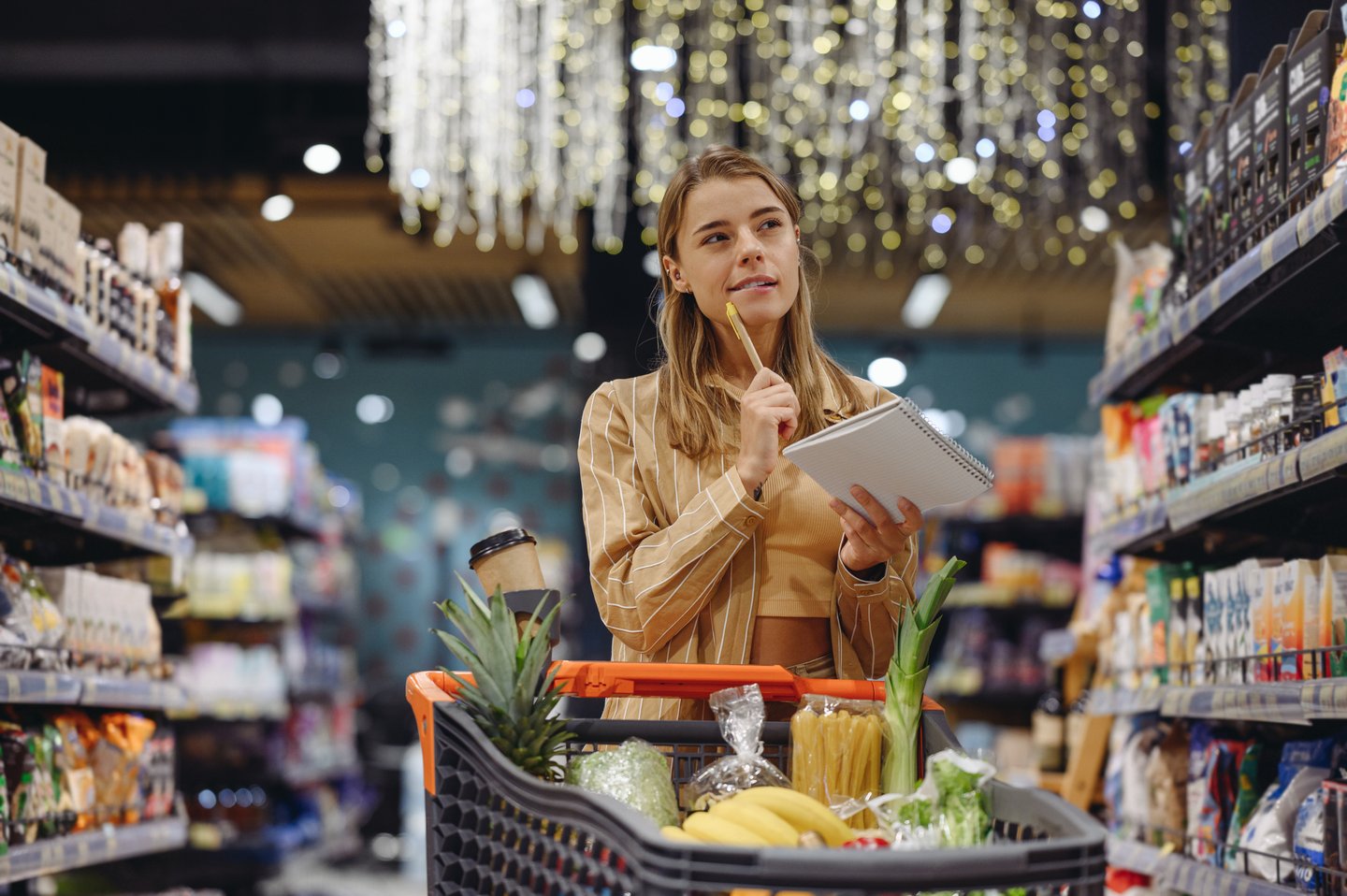7 Must-Know 2024 Retail Design Trends
For food retailers, 2023 brought a flurry of mergers and acquisitions, experimentation with store formats, and competition from new sources as pressured consumers sought the very best prices. Amid these evolutions, buyers have held fast to their desire for convenience and experience, which are quickly becoming table stakes for shopper loyalty.
To be sure, price matters, but getting out of the price game is possible when your products are backed by in-store experiences that customers crave.
[RELATED: "2024 Retail Innovation Outlook"]
Looking ahead in 2024, what design trends will satisfy shoppers and increase basket size? Here’s a quick look at the top seven trends we are tracking and how food retailers can create the perfect in-store recipe.
Trend 1: Color and Light
Food is colorful, so it follows that our spaces should reflect that.
Grocery retailers are taking a nod from the diverse shades of fruits and vegetables by going bold with color and light. Both elements have tremendous power to transform the mood and feel of your store, dramatically influencing shopper behavior.
Trend 2: Larger Than Life
While smaller stores may be cropping up, in-store design is going big. Oversized elements attract attention, feel impressive and increase brand visibility with shareable display moments that surprise and delight.
Efficient scaling is made easier with thin, corrugated and/or plastic materials that keep costs low while still looking high-end.
The challenge here is differentiating fresh food from mass merchandise. Elevate aesthetics by making it feel like a store within a store, right down to the category level.
Perhaps you’ve already switched the flooring and lighting within the fresh food area. Now focus specifically on, say, cheese. Create a larger-than-life artisanal cheese shop experience with a free-standing cart or awning that uses corrugate and/or fabric to attract attention and encourage exploration.
Trend 3: Textures and Patterns
Easily add visual interest and depth, along with evoking mood and ambiance, by deploying textures and patterns.
Food is inherently a multisensory experience – it’s why many shoppers have returned to making their grocery purchases in-store. They want to touch, feel and smell the produce. In-store displays can mirror this by strategically employing printed materials that evoke the textural aesthetics of the products themselves.
When convenience and value are standard offerings, what makes a customer drive past your competitor and come to your store instead? An inviting, easy in-store experience can make all the difference.
Create an engaging one-stop shop that enhances the journey from the entrance to the back of the store to get a fountain soda or hot coffee. Along the way, fresh food, tasty snacks and sweet treats highlighted by pops of color and textural elements differentiate the offering and tap into impulse-buying behaviors.
Trend 4: Layers
Layering is one of the best ways to get the most bang for your buck while giving your environment much-needed dimension.
Layering elements on top of each other breaks up monotony and infuses depth and intrigue, transcending the limitations of two-dimensional norms. Prioritize lightweight materials for scalable designs that captivate without burdening logistics.
Trend 5: Organic Shapes
Retailers are ditching sharp lines and rigid angles for shapes that evoke nature, like curves, swoops, waves and circular elements. This is particularly impactful when implemented by brands that have adopted a sustainability ethos.
Scalability is achievable with lightweight, bendable materials that can easily be molded into organic, nature-inspired contours.
Trend 6: Fabric
The stunning color and rich quality of soft signage delivers an unforgettable experience in a cost-efficient package.
Fabric can transform your retail space into a canvas of possibilities. It plays well with lighting. Its roll-and-ship flexibility makes it a supreme option for large prints. Additionally, if you’re looking for durability, soft signage excels.
If you’re extolling core values, the store environment must look and feel the part with sustainable, upcycled elements, while also delivering on the high-end aesthetic that your price point demands.
Organic shapes and fabric go a long way toward walking the walk, when combined with things like natural or reclaimed woods, metals and industrial elements.
Trend 7: Flexible and Structural
Displays that can perform multiple functions have the power to be more than the sum of their parts. For example, we’re seeing the use of fabric panels in space dividers, wayfinders and more to create high-impact space-within-a-space areas in grocery stores. The effect? Less overwhelming, less cluttered and more traffic.
Food retailers are also manifesting this trend by using strong, lightweight materials (like PVC and plastics) that can be heat bent to forge sturdy yet easy-to-move structural elements like seating, displays and columns.
In-store grocery shopping is, once again, having a magic moment. The power to excite shoppers about your brand lies in your ability to curate the brick-and-mortar experience consistently and strategically, giving your stores the edge that they need to win in a competitive retail landscape.






